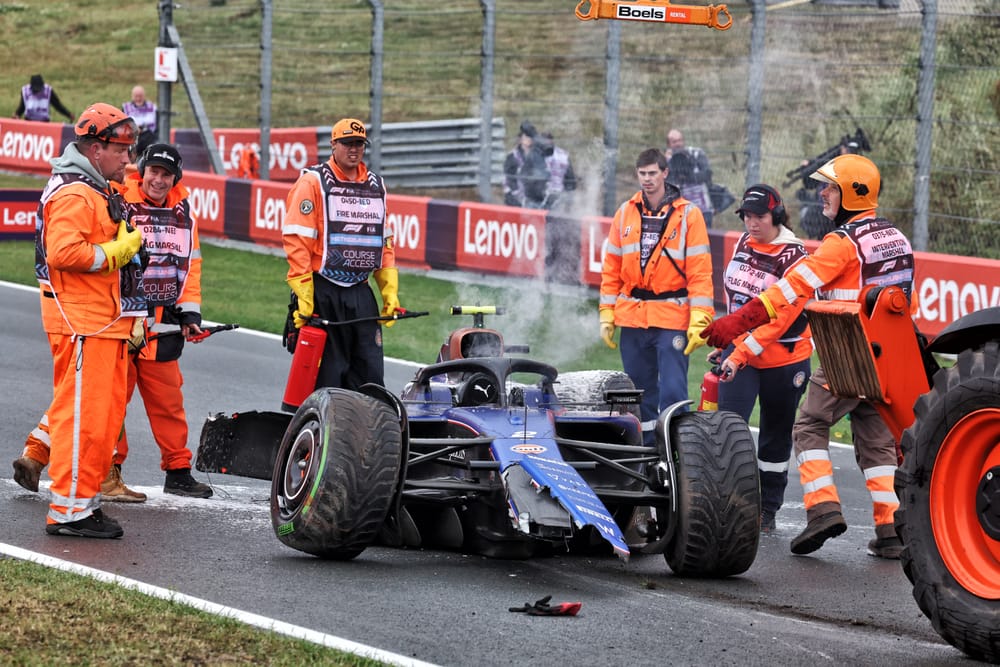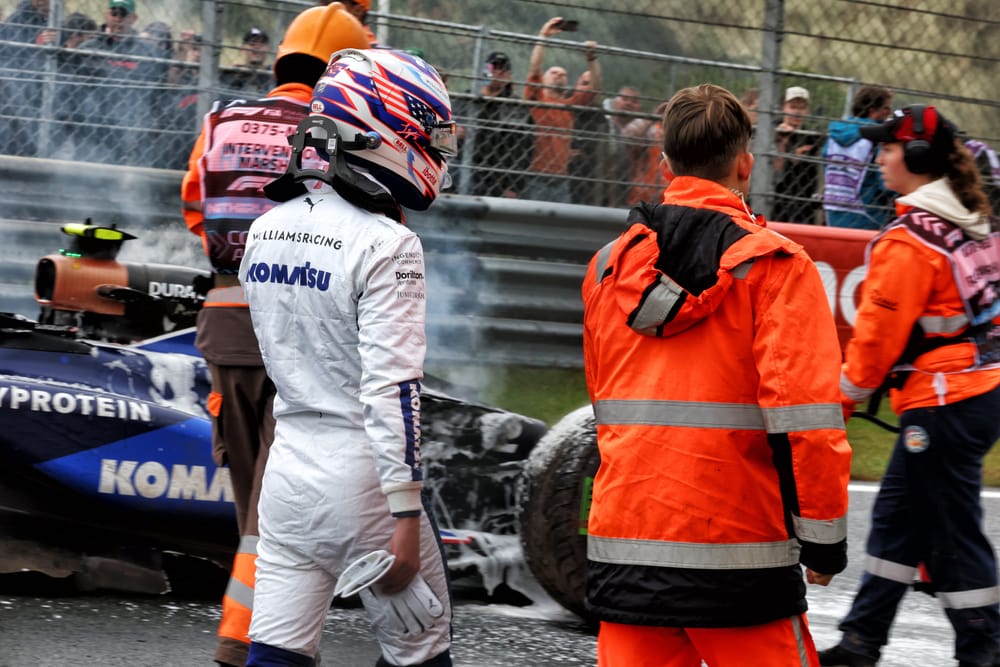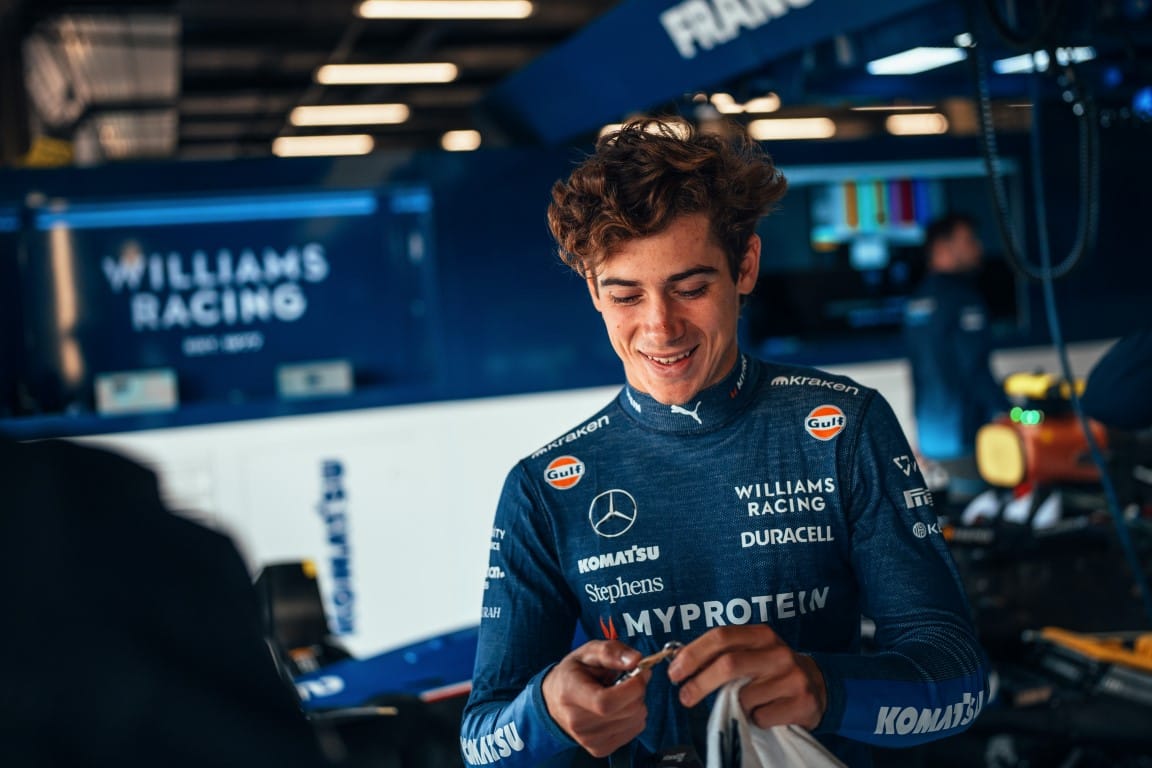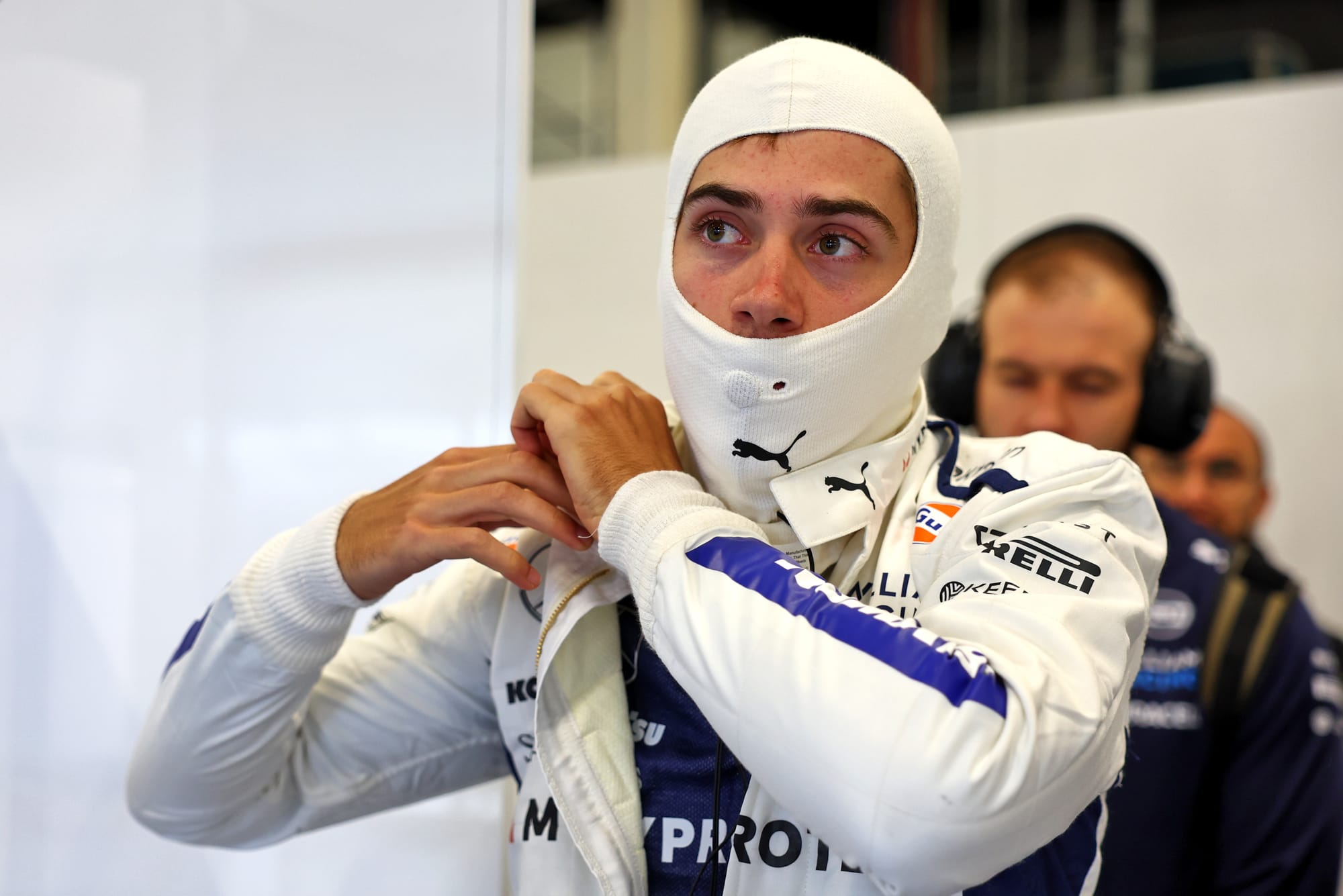Up Next

Logan Sargeant being dropped by Williams is not a surprise in the grand scheme of things. The timing of it, and the identity of his replacement, was unexpected – and reflects a damning final judgement by the team.
In Sargeant’s place, the American having failed to even make it to the end of the 2024 season, Franco Colapinto, the Williams junior driver who is only in his first season of Formula 2, where he was sixth in the standings.
Harsh as mid-season driver changes always are, whether Sargeant’s been hard done by with this decision is not up for debate. Williams has been open to the change for several months - some were even surprised he lasted this long – and he has not risen to the challenge. His rookie season was unconvincing, his sophomore campaign disappointing.
Sargeant had spins or crashes or clashes in more than a dozen of his F1 weekends, giving him an incident rate of more than one-in-three, and what happened in Zandvoort was the final straw.
Williams boss James Vowles was clearly appalled by the size of the crash, how careless it was to drift onto the grass like that, and the consequences in terms of a seven-figure repair bill and a huge rebuild job in-weekend and production of new parts at the factory.
He was immediately scoping out his options from rival teams and acted very quickly on his final decision given Colapinto replacing Sargeant was confirmed barely 48 hours after the race finished.
But it clearly wasn’t the plan to do this now. It makes no sense to purposely change a driver one race after the summer break, to let Sargeant continue for just one weekend, and to compromise Colapinto’s preparations this way.

No serious team or team boss would choose to bung in a rookie driver at about two days’ notice over giving them all of August to prepare mentally, to get in the factor either side of the shutdown for simulator work and briefings, and to have an extra race weekend in the car.
And whatever you may think of Williams and Vowles in all this, they are very serious about how they do things. If they were dead keen to get rid of Sargeant they’d have done it in the massively more convenient gap in the calendar that F1 just had.
That indicates things were changed substantially by what happened at Zandvoort, beyond simply ‘Sargeant had a crash’. It was another crash, one that must have layered onto a rising issue of team morale, among other things. Rebuilding cars trackside and pumping out parts at base is an occupational hazard in F1 but Sargeant’s given Williams more work than most drivers and the immediate destruction of a major upgrade package at Zandvoort was particularly galling. The financial and human cost of that is significant.
Sargeant had also started to bluntly reference driving for himself and for specifically the team on his side of the garage working on his car, and sounded like he believed there was an agenda against him somewhere. Maybe outside the team, maybe inside it. It was getting a little ‘everyone’s against me except my crew’ – perhaps inevitable given the enduring struggle, the scrutiny, and the open shopping around that Vowles was doing.

Some circumstances really were against him - like how uncompetitive Williams was for months with a massively overweight car, the spare chassis crisis that forced Sargeant to be parked mid-weekend in Australia even though it was Alex Albon who had crashed heavily, and an ensuing disparity in car upgrades that meant Sargeant had to wait until deep into the season to get on the same specification.
This was far from ideal, and not Sargeant’s fault at all. But what was in his control was how he performed in that situation and he rarely if ever pieced together a complete weekend. The closest he came was probably the British Grand Prix this year at Silverstone, but even then he was missing a crucial bit of pace compared to Albon - who finished in the top 10.
There were flashes of promise but generally he has not been quick enough, and crashed too much. Williams clearly felt that keeping Sargeant would achieve nothing, whereas the right replacement could support Albon in the bid to score points in a much improved FW46 over the rest of the season.
What many are unsurprisingly questioning is whether Colapinto can be that driver. And it’s worth acknowledging that the preferred options were not available.
Red Bull wouldn’t release Liam Lawson on a ‘no strings attached’ basis for the rest of 2024, though, because it might need him in one of its own teams before the end of the year. Mercedes wants Kimi Antonelli to see out his F2 season and his F1 programme, which includes an FP1 debut at Monza this weekend, all designed to get him ready to drive for the Mercedes works team in F1 in 2025.

The driver who will be most disappointed to miss out will be Mick Schumacher, who has been passed over by yet another F1 team. Persistent doubts from a two-year stint in F1 that was definitely better than Sargeant’s, but still fell into the category of being unconvincing and had a few too many crashes, have counted against himself.
The appeal of Colapinto was rumoured to be boosted by Argentine backers throwing in a few million dollars. That’s not essential in the Dorilton era, but might either help cover the losses incurred by Sargeant’s many crashes or act as ‘insurance’ if Colapinto has his own accidents while learning on the job.
He is also an interesting choice on merit, though. Colapinto’s a Williams junior, for starters, and how many times have you heard people complain that teams don’t back their own youngsters?
Colapinto's having a good rookie F2 season, if not stunningly great. But he’s won a sprint race, is sixth in the standings, and is beating a much more experienced team-mate, F3 champion Dennis Hauger. And it’s hard to judge a driver solely on F2 this year because even by that championship’s standards it’s a bit of a crapshoot.

While he doesn’t look like a megastar in the making based on his junior CV alone, but there is clearly potential there. And Lawson proved last year that a good young driver can perform perfectly well in F1 if they have the right attitude and opportunity.
Ultimately, Williams doesn’t have an awful lot to lose, so it’s chasing the upside with a driver who might have more of a spark than the other available choices. Best case scenario, Colaptino adjusts well, is quick and dependable, and he scores a few points. Which is better than what Sargeant offered. Worse case scenario, he crashes too much and is slow when he doesn’t - which is just at the bad end of what Sargeant offered.
If it works, it’s helped Williams in the short-term, which is its immediate priority. OK, he doesn’t have a Williams seat to step into in 2025, given it’s signed Carlos Sainz, but that’s a great problem to be facing as the team that will know its leading protege is good enough for F1, and Colapinto will have boosted his profile and his stock beyond his wildest dreams.
While it is relatively low-risk, high-reward, this isn’t something Williams cannot afford to view as a total free hit. The bar will be lower at first, to avoid putting unnecessary pressure on Colapinto in a difficult situation, but Williams expects a steep trajectory of improvement in response to a steep learning curve. It has made it clear this change has been made in the pursuit of scoring more points.

The team is only ninth in the championship and vulnerable to finishing last if Sauber, the soon-to-be-Audi works team, stops being relentlessly terrible. If Williams can start stringing some points finishes together, though beating Alpine to eighth is possible. There are tens of millions of dollars at stake here.
On the evidence of Albon’s speed at Zandvoort in the upgraded car, before he was disqualified from qualifying for a non performance-enhancing issue with the new floor, there will be chances to fight for top 10s over the rest of 2024.
Ultimately, Williams's faith and patience must have fallen to absolute zero with Sargeant, for it to feel that parachuting in an under-prepared F2 rookie had a better chance of yielding points and being better for the team.
The timing and the identity of his successor are more damning than simply the decision to make this change at all.







